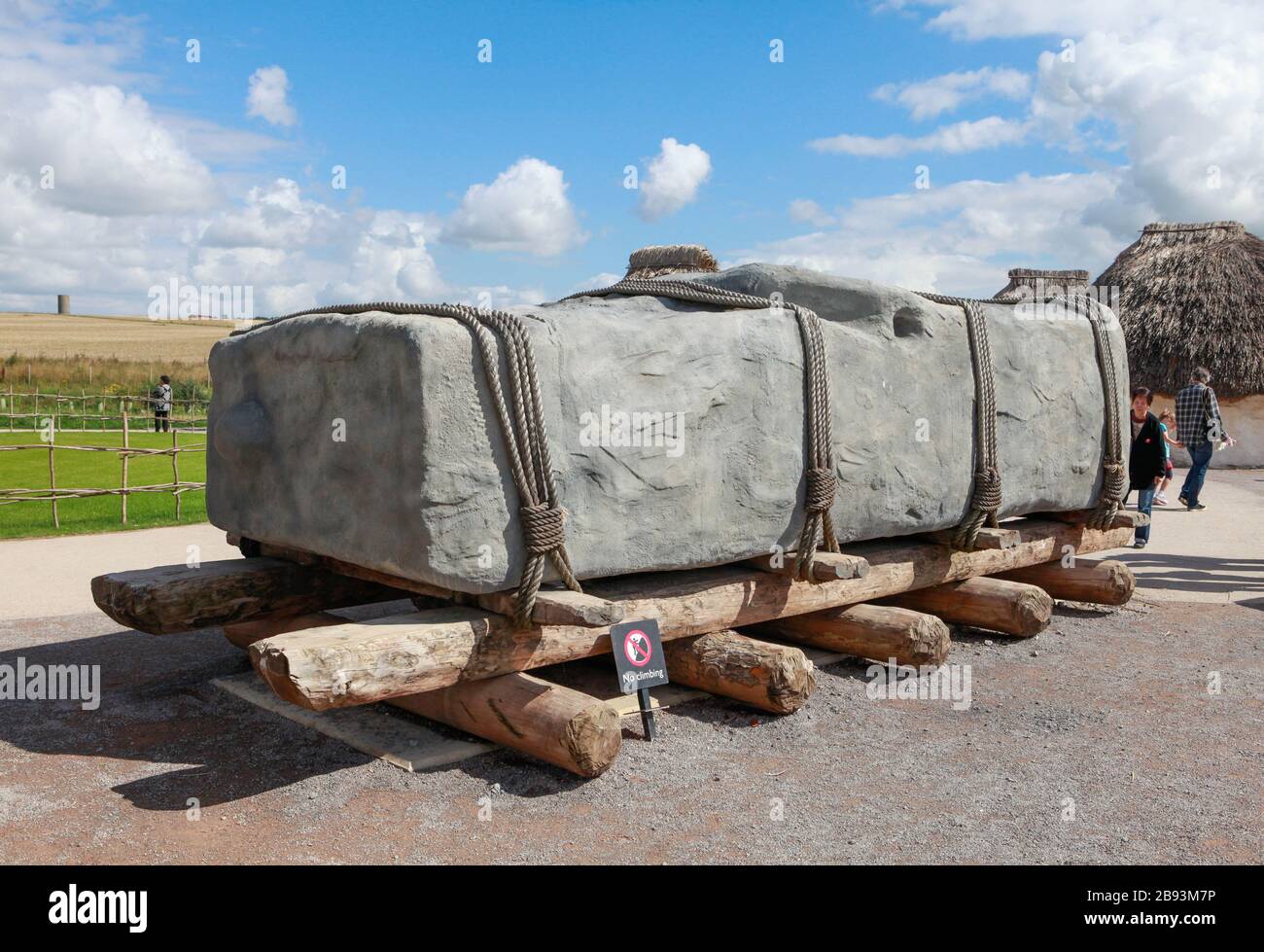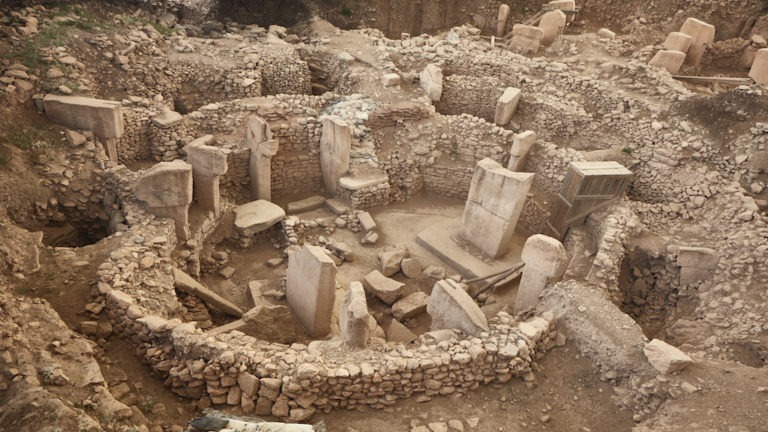The Enigmatic Stones of Stonehenge: Unveiling the Mysteries of a Prehistoric Marvel
Nestled in the rolling hills of Wiltshire, England, lies one of the world's most famous and enigmatic prehistoric monuments—Stonehenge. This awe-inspiring stone circle has stood the test of time, with its origins and purposes shrouded in mystery, captivating the imaginations of historians, archaeologists, and tourists alike. In recent years, groundbreaking research and modern archaeological methods have peeled back layers of the Stonehenge enigma, offering intriguing insights into the people who built this ancient structure and why.
The construction of Stonehenge spanned several phases, beginning as early as 3000 BCE, during the late Neolithic Age. At this embryonic stage, the site comprised a simple earthwork enclosure, where prehistoric peoples possibly gathered for ceremonies or communal activities. However, the Stonehenge that is so iconic today began to take shape around 2500 BCE, with the arrival of the massive sarsen stones that form its outer circle and horseshoe arrangement.
The immense scale of this undertaking begs the question: how did a society without modern tools and machinery manage to transport, shape, and erect these towering stones? The largest of the sarsen stones weigh up to 25 tons and, according to most estimations, were likely sourced from Marlborough Downs, some 20 miles to the north. Recent discoveries have shed light on the possible methods of transportation, including the use of sledges and rollers, moved along trackways of specially prepared surfaces, which show the remarkable ingenuity of these ancient engineers.
The smaller bluestones, some of which weigh up to 4 tons, present an even more bewildering puzzle, as they come from the Preseli Hills in Wales, over 150 miles away. Their journey to Stonehenge is a topic of ongoing research and debate, with theories ranging from human transport to glacial action being responsible for their presence at the site.
Archaeological excavations have revealed a wealth of artifacts and human remains around Stonehenge, which point towards the site being much more than a mere feat of engineering. Radiocarbon dating indicates that these burials took place between 3000 BCE and 2500 BCE, coinciding with the most significant Stonehenge construction periods. The bones, many of which exhibited signs of injury and disease, suggest that the area served as a burial ground, possibly holding ritual significance for the people who built it.
The alignment of the stone circle has long fascinated researchers, noting its orientation towards the summer solstice sunrise and the winter solstice sunset. This celestial connection underscores the likelihood that the monument functioned as a calendrical marker or a site for astronomical observations, rituals, and festivals. Stonehenge's layout appears to encode sophisticated knowledge of the heavens, echoing the importance of celestial bodies to Neolithic people.
Recent digs and geophysical surveys have revealed an even broader context for Stonehenge within a vast network of ceremonial sites across the British landscape. Just two miles away, the discovery of the Durrington Walls—a site believed to be a large settlement and ceremonial complex—provides clues about the lives of the people who built Stonehenge. Analysis of animal bones found here suggests that people traveled from across Britain to feast and partake in rituals, indicating that Stonehenge was part of a wider cultural and religious landscape.
Despite centuries of scrutiny, Stonehenge retains its sense of enigma and wonder. Contemporary observers may never fully grasp the motivations and beliefs of the people who toiled over its massive stones, but the monument stands as a testament to their incredible determination and skill. It is this sustained mystery, combined with the tangible connections to our distant ancestors, that continues to draw visitors and scholars to Stonehenge, ensuring its place as a perpetual source of fascination and reverence.
As we delve further into its mysteries, Stonehenge remains a symbol of our enduring quest to understand the origins and the very nature of human culture. The stones, silent for millennia, seem to echo with the echoes of forgotten ceremonies and whispers of the distant past. Yet, they stand resilient, challenging us to unravel their secrets and offering a glimpse into an era that shaped the foundations of human society as we know it.The mysteries of Stonehenge are not confined to the towering stones and the vast landscape they dominate; instead, they are woven into the very fabric of the soil. As researchers continue to unearth the layers beneath this ancient site, they encounter an intricate tapestry of human activity that extends beyond the stones themselves. Beyond the perimeter of the iconic sarsen circle, the land conceals a complex network of pits, ridges, and adjacent structures that paint a picture of a society profoundly connected to this place.
One such enigmatic feature is the ring of pits known as the 'Aubrey Holes,' named after 17th-century antiquarian John Aubrey, who first identified them. These pits, which form a circle inside the sarsen stone ring, may have initially held wooden posts and were later reused to house cremated human remains. Radiocarbon dating places these burials in the same period as the second phase of construction, underscoring the site's dual roles as both sacred temple and tomb.
To the northeast, the Heel Stone, a massive unworked sarsen, stands sentinel. It is aligned with the avenue – a processional path that links Stonehenge to the River Avon. This alignment with the sunrise of the summer solstice suggests that the avenue may have served as an ancient ceremonial route taken during rituals and celebrations, further indicating the site's role in marking seasonal events. These processional routes are testimony to the fact that Stonehenge was not an isolated monument but part of a greater religious landscape, integrated into the ceremonies that defined Neolithic life.
Excavations in the surrounding countryside have also identified numerous other ceremonial sites and burial mounds, known as barrows, which had significance in the wider religious context of which Stonehenge was the centerpiece. It is becoming increasingly clear that this was not a static monument but part of a dynamic cultural region, evolving over centuries of use.
Technological advancements have played a significant role in expanding our understanding of Stonehenge and its environment. Non-invasive techniques like ground-penetrating radar, remote sensing, and laser scanning have revealed hitherto unseen details, such as buried features and subtle changes in the landscape. These methods allow archaeologists to explore the site in more detail without disturbing the ground, offering a respectful approach to studying such a revered place.
One of the most compelling theories about Stonehenge is the notion that it may have represented a domain of the dead, a counterpart to the vibrant life at nearby Durrington Walls, often referred to as a 'domain of the living.' This theory is supported by the contrasting finds of numerous animal bones at Durrington Walls, indicative of feasting and dwellings suggestive of seasonal occupation, versus the austere ceremonial nature of Stonehenge with its burial sites.
Moreover, recent analysis of the human remains found at Stonehenge suggests that these were people of high status, perhaps ancestral figures or leaders. Some of the cremated remains were encased in chalk coverings known as "incense cups," which may have been used in funerary practices. The isotopic signatures of some skeletons indicate that at least a few individuals may not have been local to the region, hinting at the far-reaching influence or importance of Stonehenge in the Neolithic world.
In reassessing Stonehenge as part of a broader ceremonial landscape, we gain a more nuanced picture of its function and significance. It emerges as a node within a tapestry of ritual activity that extended across the terrain, intertwining the cycles of life and death with the rhythms of the cosmos. Stonehenge's builders were not isolated artisans but part of a complex society that perhaps made pilgrimages to this site, contributing to its construction as an act of unification and celebration.
This concept of movement and convergence is crucial in understanding Stonehenge. It was not merely a monument to observe but a place to be experienced: a destination for gatherings, a focus of travel, and a monument that demanded engagement, both physical and spiritual. Its enduring legacy lies not only in the immense stones but in the journeys it inspired and the community it fostered.
As we forge ahead, piecing together the echoes of the ancient past, Stonehenge remains a powerful symbol - a nexus point where history, archeology, and human ingenuity intersect. With each layer unearthed, with each theory proposed, the story of this prehistoric marvel evolves. And while we may unravel many of its mysteries, Stonehenge retains an air of enigmatic grandeur, reminding us that our search for understanding is as timeless as the stones themselves. As the sun continues to rise and set over Salisbury Plain, the quest to decode the secrets of Stonehenge persists, an enduring testament to our enduring desire to connect with the ancients and the landscapes they hallowed.







%20640.jpg)




Comments